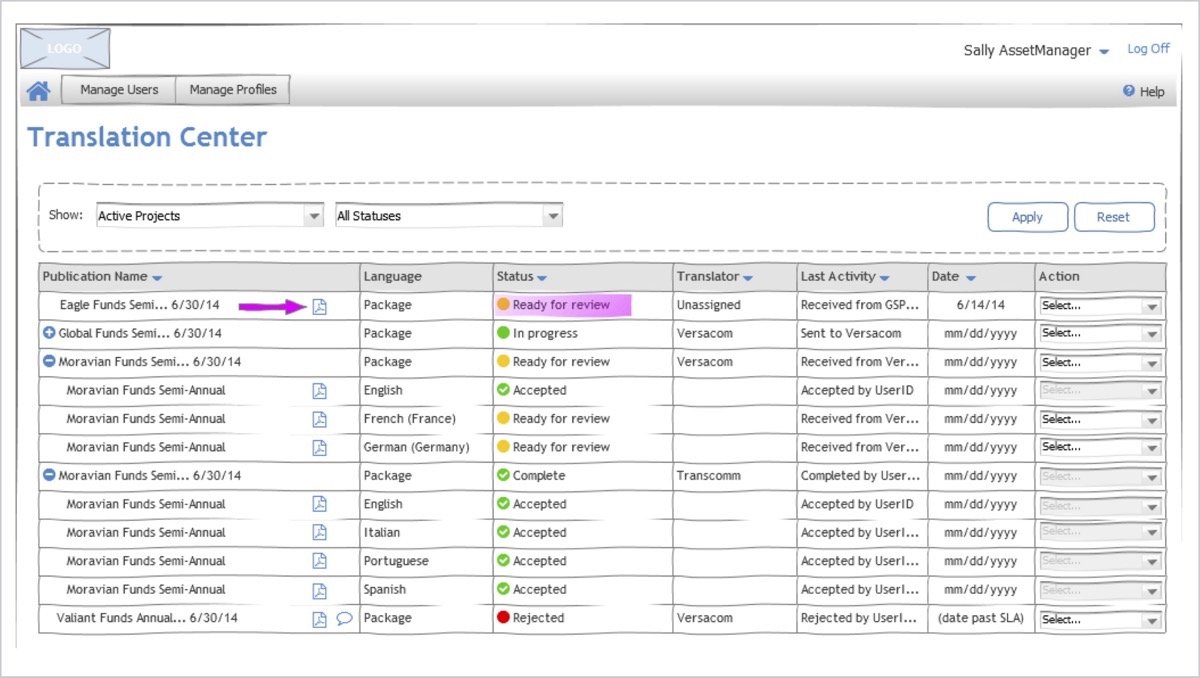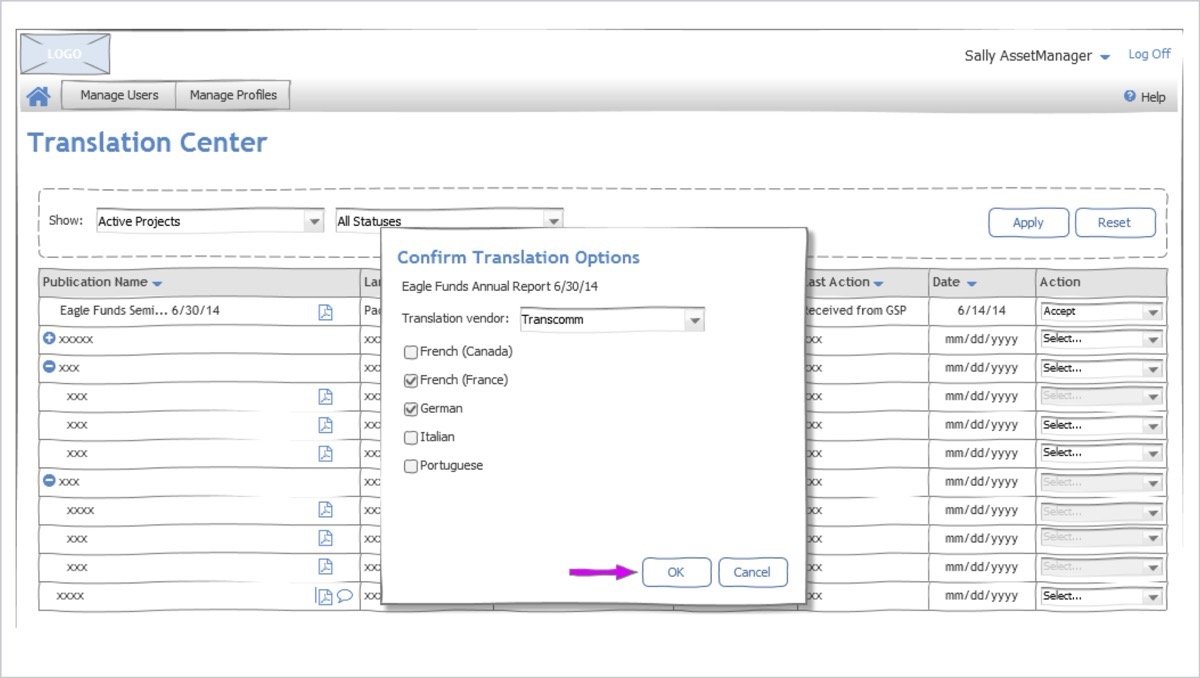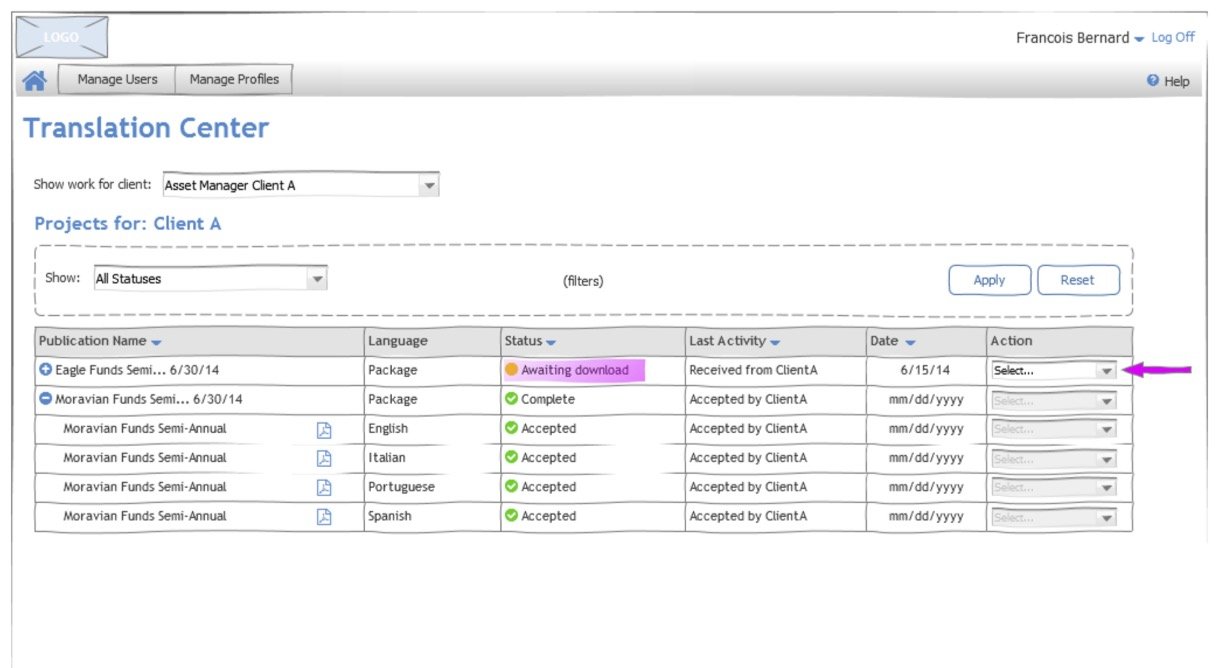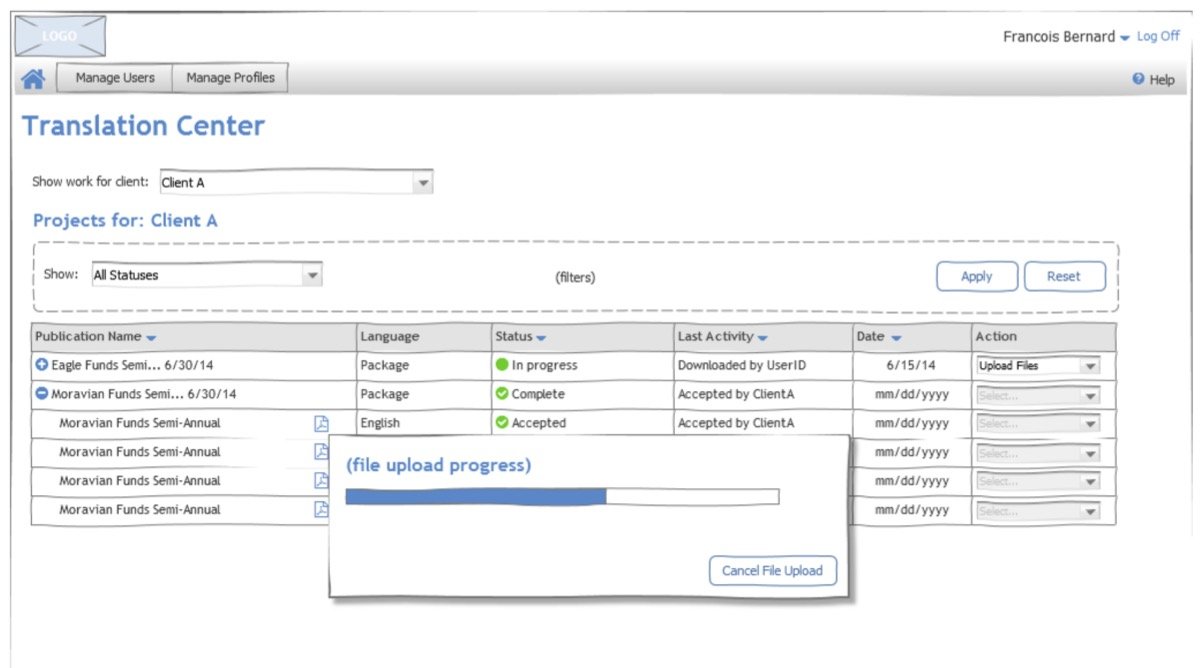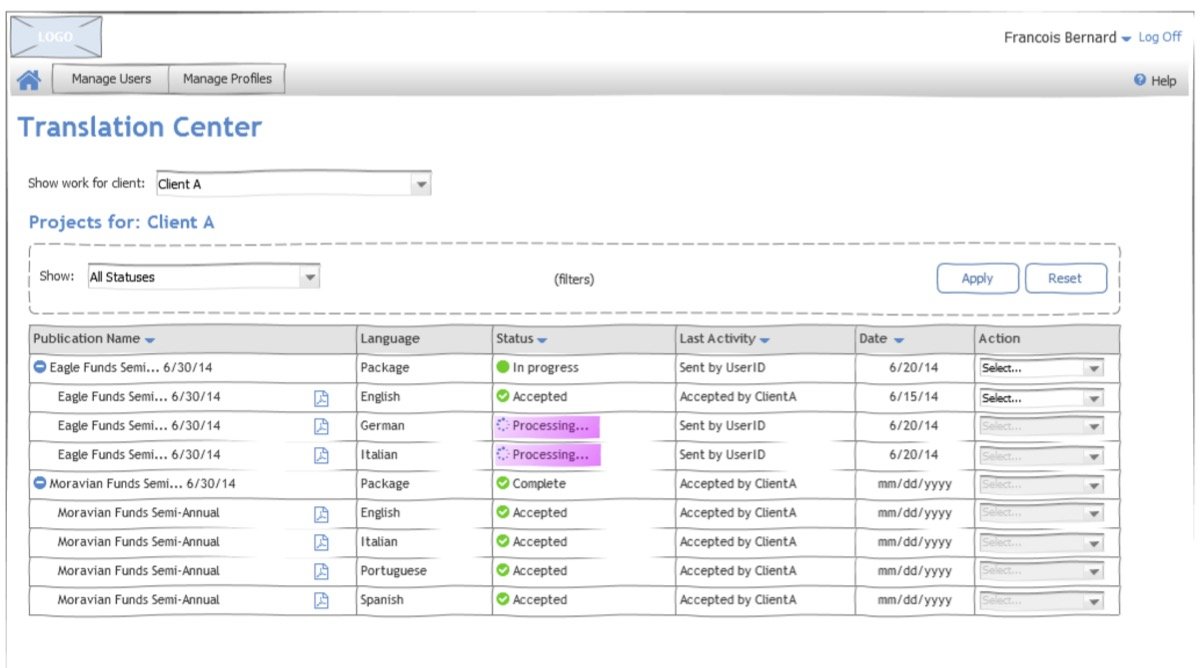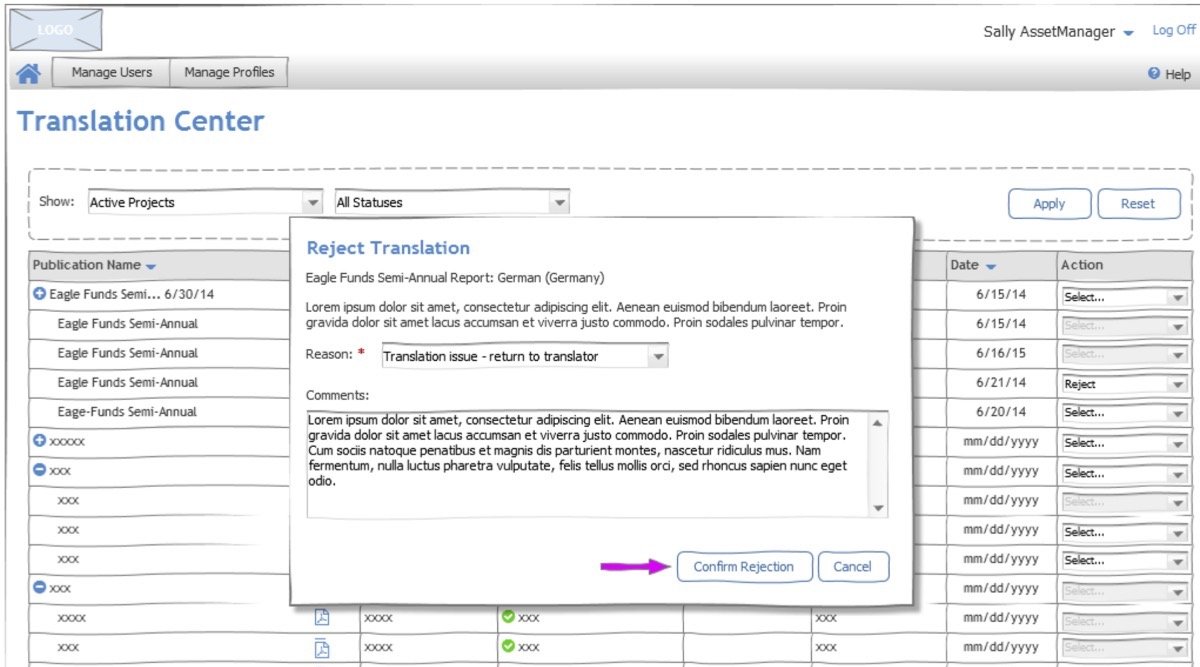Conceptual Design: Translation Management Software
A fintech company was considering a new companion software product for their automated financial publishing platform: a translation management workflow and file publishing product. The product team wanted to explore the concept and potential customer interest before investing time and money to build.
Goals
Define the conceived translation process workflow and personas.
Create a minimal-fidelity interactive prototype to illustrate the Translation Center product.
Use the prototype to drive discussion and product concept refinement.
Use the prototype to gauge customer interest in the product.
Conceptual product prototype
The screen shots below are from the proposed publication translation workflow and an interactive conceptual prototype.
Workflow diagrams
Workflow: Approval and translation requests
The first phase in the process: a publishing coordinator at a third-party administration company creates fund publications and sends them to asset managers for final review, then submits translation requests.
Workflow: Translation, publication, and review
The second phase: a publishing coordinator at a third-party administration company creates fund publications and sends them to asset managers for final review.
Conceptual prototype screens: Approve English publication and request translations
The conceptual images below convey the Translation Center portal dashboard for Sally, a fund manager at a fund company. Fund company asset managers submit translation orders after confirming fund publications are accurate in their original language and meet regulatory guidelines.
Conceptual prototype screens: Manage translation requests and return for review
The conceptual images below illustrate the Translation Center portal dashboard for François, a translation manager at a translation vendor. Translation managers assign documents to translators and return the translated files to the fund managers. Translation Center automatically publishes the translated files in the correct format prior to review by fund managers.
Outcomes
The resulting Translation Center prototype was low in visual fidelity, medium in depth, content, and interaction, and high in breadth to show the complete workflow.* It effectively drove internal conversations to refine the product concept prior to vetting the it with existing customers of the publication platform.
The prototype brought to life the concept documents and other written information and talking points shared with potential customers.
Spending minimal time and money, we learned we should not develop the product at that time. Our customer base did not include enough clients doing substantial translation work to generate sufficient interest in a product like Translation Center. We failed fast, with minimal expense and time spent. Failing fast is one of the core tenets of agile product development.
* Kyle Murphy's excellent 2019 Medium article articulates what we have long practiced concerning when to use different levels of fidelity in prototypes:
Murphy, Kyle. "The Five Dimensions of Prototype Fidelity," Medium. 12/10/2019.

